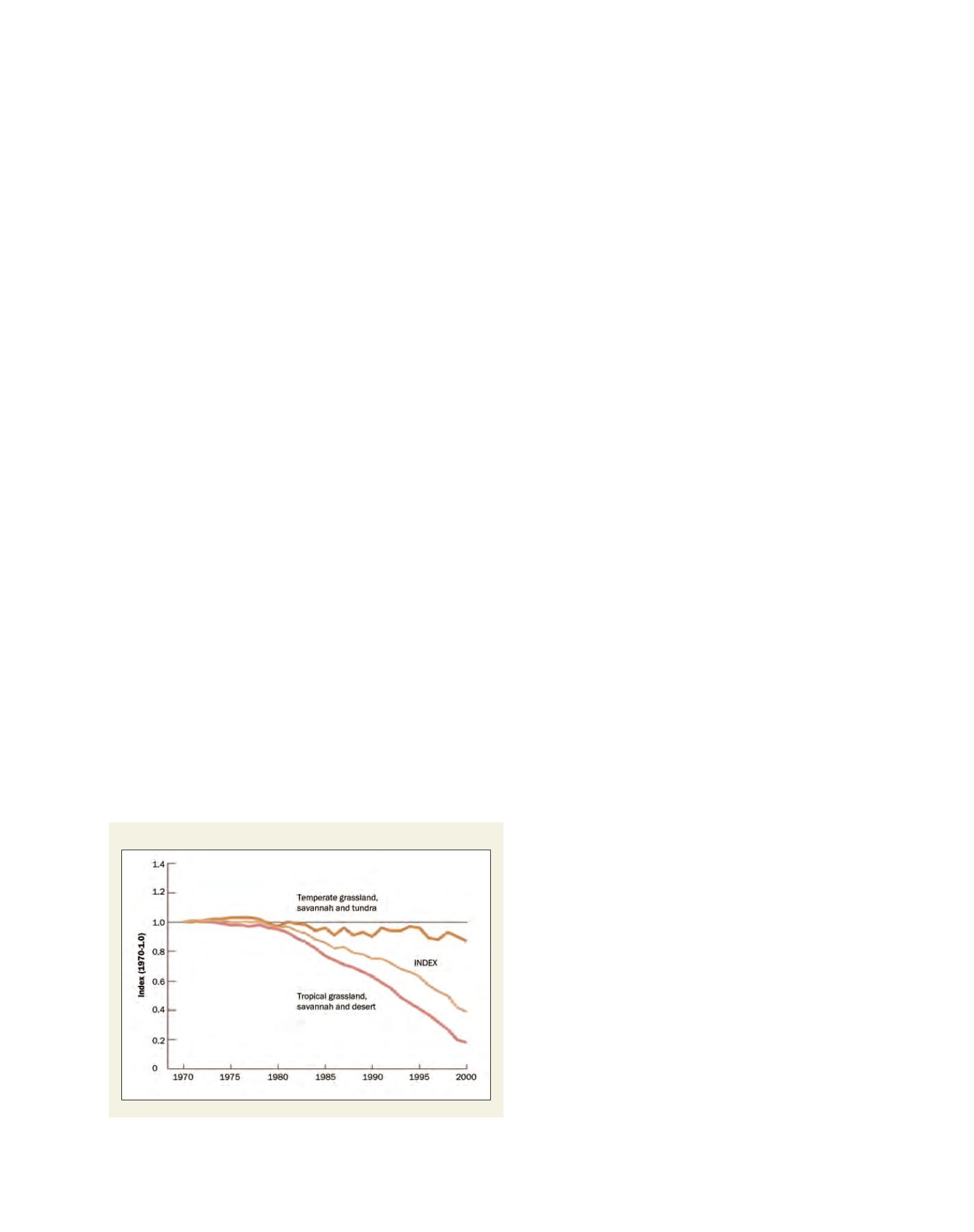

[
] 64
T
he
I
mpacTs
and
I
mplIcaTIons
of
c
lImaTe
c
hange
and
V
arIabIlITy
putting together ecological and human dimensions
of desertification, and offering an important answer
to the question on how desertification leads to
migration: through poverty. Already, dryland popu-
lations are being left behind by the rest of the world,
given the fact that they rank very low in terms of
human well-being and relevant development indi-
cators.
17
The effects of poverty are also considered by
Reuveny
18
who developed a new theory, arguing that
people are able to adapt to environmental changes in
only two ways: they can resist the changes, or leave the
affected area. Which option they choose depends on the
severity of environmental degradation and on the soci-
ety’s technical capabilities. In extreme situations, land
degradation can remove the economic foundation of a
community or society. Experience from recent decades
can be interpreted as showing that land degradation and
desertification have been a major driving force behind
the displacement of people.
Myers
19
quotes a figure of at least ten million
people who have become environmental refugees in
semi-arid lands with a far greater number expected
to come, as one billion people are at risk, and their
population growth rate is as high as three per cent
per year. Desertification reduces the land’s resilience
to climatic variations and thus undermines food
production, contributes to famine and affects local
socioeconomic conditions. It thereby triggers a vicious
circle of poverty, ecological degradation, migration
and conflict. Desertification-induced migration and
urbanization may worsen living conditions in desti-
nation countries by overcrowding, unemployment,
environmental pollution and overstressing of natural
and infrastructural resources. It could also cause social
tension and conflicts, as well as increase problems
such as crime and prostitution.
Considering incomes and human well-being, the
‘worst situations can be found in the drylands of Asia
and Africa; these regions lag well behind drylands in
the rest of the world’.
20
The situation regarding the
present and prospective availability of key ecosystem
services appears to be similar, ‘the greatest vulner-
ability is ascribed to sub-Saharan and Central Asian
drylands’.
The synchronous appearance of conflict, migration
and desertification does not happen by chance. Their
links are clearly visible. ‘Conflicts and environmental
degradation further aggravated the pressure for migra-
tion from poorer to relatively prosperous regions,
within and outside the West African sub-region. In
the Sahel, in particular, desertification and cyclical
famines have triggered waves of environmentally-
displaced persons across national frontiers within the
sub-region’.
21
These environmental events are expected
to appear more often and more severely with ongoing
and exacerbated global warming,
22
especially when
sustainable agriculture practices are not being quickly
and resolutely implemented.
• Fuel exporting countries with their own kind of overexploitation
and desertification phenomena
• Eastern European countries with their chemically and
agriculturally induced land degradation.
They all have to face similar results of loss of ground, desertifica-
tion and its impacts. The tropics suffer most from these events.
The Living Planet Index of tropical grasslands, savannahs and
deserts dropped by 80 per cent since 1970, while temperate areas
remained quite stable. The sharp drop does not equate to a total
loss of existing species, but a loss of 80 per cent of the former
existing individual animals, which is the highest number of all
observed ecosystems.
9
In the early 21st century, ‘drylands occupy 41 per cent of the Earth’s
land areas and are home to more than two billion people. Some 10-20
per cent of drylands are already degraded. About 1-6 per cent of the
dryland people live in desertified areas, while a much larger number
is under threat from further desertification’.
10
Another synthesis of the
state of Earth’s deserts was published by UNEP.
11
Traditional approaches to assessing and combating land degra-
dation distinguished between ‘the meteorological and ecological
dimensions of desertification (the biophysical factors) and the
human dimensions of desertification (the socioeconomic factors).
Previous failures to recognize and include the interdependencies of
these dimensions in decision-making have slowed progress toward
the synthetic approaches needed to tackle the enormous problem
of dryland degradation’.
12
In the past this has hindered the scientific community in its
approach to present a comprehensive understanding of the ‘causes
and progression of desertification’.
13
Therefore, ‘synthesis of dryland
degradation studies continues to be plagued by definitional and
conceptual disagreements, and by major gaps in global coverage’.
14
Even the Millennium Ecosystem Assessment (MA) with its broad
research agenda had to acknowledge wide gaps in the scientific
understanding of desertification processes, as well as their underly-
ing causal factors.
15
Nevertheless, with the concept of ‘ecosystem services’,
16
the
MA used an important and widely underestimated link between
environmental degradation and human well-being, partially
Living Planet Index
Source: WWF (4: 2004)
















